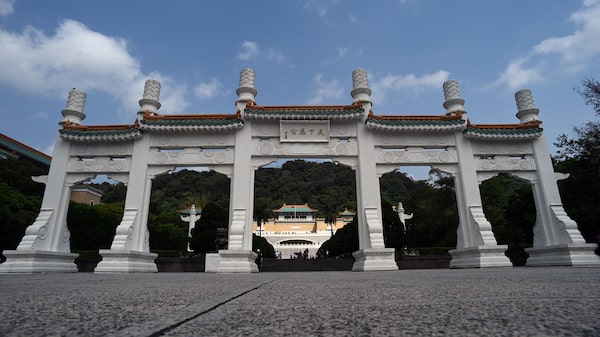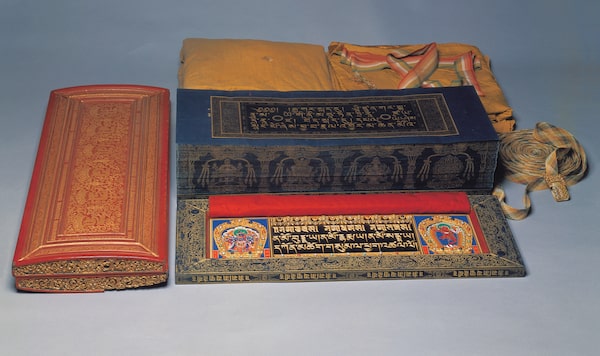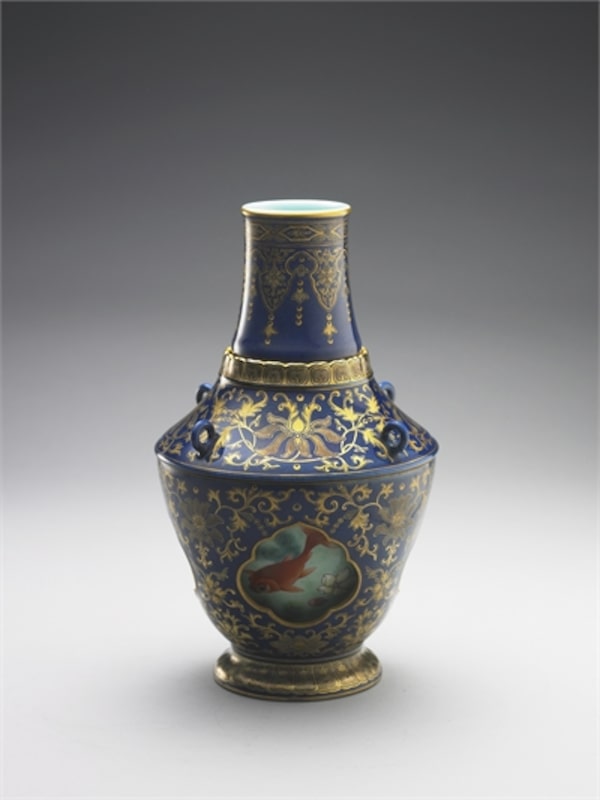
Taiwan's National Palace Museum in Taipei on Mar. 13, 2019.SAM YEH/Getty Images
Inspired by Ukraine’s success at safeguarding cultural artifacts from Russia’s military assault, Taiwanese museum directors are drawing up plans to hide their most valuable items if war with China is imminent.
Should China invade, Taiwan’s cultural treasures are headed for secure warehouses – including at least one deep inside a mountain.
Where exactly? Wu Mi-cha, director of Taiwan’s prestigious National Palace Museum, won’t say.
That’s an operational secret.
All he will say is planners are envisioning how to cope with air strikes “and we have to move these items into an area that is capable of protecting them from explosions and damage.”

_Tripitaka in Tibetan_ (Qing Dynasty). If China invades, Taiwan’s cultural treasures are headed for secure warehouses – including at least one deep inside a mountain. Where exactly? Wu Mi-cha, director of Taiwan’s prestigious National Palace Museum won’t say.Handout
Opinion: Engaging Taiwan is in Canada’s national interest
Taiwan’s National Palace Museum holds one of the biggest collections of Chinese art and antiquities in the world, much of it brought over by retreating Nationalist forces who lost the Chinese civil war to the Communists in 1949. A significant share of the nearly 690,000 items are from the Forbidden City in Beijing and other imperial palaces around China.
Mr. Wu points out, with evident pride, a bronze cauldron covered in script from China’s Western Zhou dynasty and an 11th-century ink rendering of mountain peaks and trees by Guo Xi, which is considered a major milestone in the development of Chinese landscape painting. He notes gold-lettered Tibetan manuscripts from 1669 and a delicate ceramic lotus-shaped bowl from the Northern Song dynasty that reflects a Buddhist influence.
The museum, built like a Chinese palace in northern Taipei with curved yellow and green tiled roofs, held an internal evacuation planning exercise in July featuring a scenario where air strikes were hitting Taiwan and electric power had been cut. Mr. Wu said Taiwan’s Ministry of National Defence and National Security Bureau are advising the curators what an attack would look like and how to navigate the chaos.

Ceramic lotus-shaped bowl, from the Northern Song dynasty, that reflects a Buddhist influence.Handout
His staff have the difficult task of creating a must-save list of items to pack up if the bombs start falling, Mr. Wu said, and have started to prioritize the most “valuable of items in our inventory to be evacuated.”
Beijing’s authoritarian rulers consider Taiwan a breakaway province even though the Chinese Communist Party, which seized power on the mainland more than 70 years ago, has never governed the island. It’s where Nationalist leader Chiang Kai-shek retreated after losing the civil war to the Communists. Beijing has not ruled out the use of force to bring Taiwan under its control. U.S. experts predict that by 2027, China will be capable of invading Taiwan.
Hsu Ya-hwei, a professor in National Taiwan University’s history department, said a significant percentage of the art and antiquities that Mr. Chiang brought to the island during his retreat came from the imperial collection of the Qing dynasty, which lost power in 1912 after being overthrown. Qing rulers in turn had inherited the treasures from previous dynasties.
Prof. Hsu said for Mr. Chiang, the imperial collection, handed down between dynasties, was a potent political symbol that he felt backed up his claim to be the legitimate ruler of China.

Revolving vase with swimming fish in a cobalt blue glaze from the Qing Dynasty.Handout
Many of Taiwan’s major museums are making crisis plans. Across town, the National Taiwan Museum, which contains many artifacts from the island’s history, held a simulated evacuation drill on Sept. 28 where staff practised packaging and readying artifacts for transportation. They worked with police on plans to escort the valuables to safekeeping.
Prof. Hsu said the 10-year Cultural Revolution in China, during which gangs of Red Guards smashed temples and artwork as part of a Communist attack on traditional Chinese culture, made Taiwan’s collection even more valuable.
He said, however, that archeological finds by the Chinese in the years following have nevertheless added a lot to the mainland’s cultural inventory.
Canada played a key role in protecting Polish royal treasures during the Second World War. Items including Flemish-made tapestries were spirited out of Poland when war broke out and moved across Europe along with the fighting. Anxious to keep these riches from Hitler’s troops, Poland’s government-in-exile asked Ottawa in 1940 to provide a haven for them. A significant part of the collection was stored for years at Ottawa’s Central Experimental Farm, an agricultural research facility.
Would Taiwan consider moving some of its artifacts to foreign locales? Mr. Wu said that decision is above his pay grade. “It’s not my call.”
He said government officials would have to decide if the collection remains in Taiwan, deep inside that secret mountain stronghold, or moves further afield.

Travelers Among Mountains and Streams by Fan Kuan, painted between the 10th and early 11th centuries.Handout
With reports from Daniel Ceng
 Steven Chase
Steven Chase